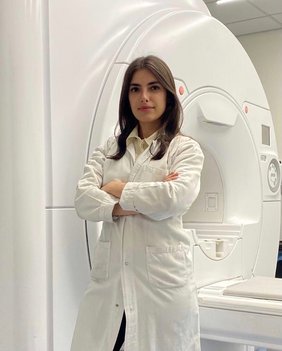Radiologic-Pathologic Correlation of Hepatobiliary Phase Hypointense Nodules without Arterial Phase Hyperenhancement at Gadoxetic Acid–enhanced MRI: A Multicenter Study.
Ijin Joo, So Yeon Kim, Tae Wook Kang, Young Kon Kim, Beom Jin Park, Yoon Jin Lee, Joon-Il Choi, Chang-Hee Lee, Hee Sun Park, Kyoungbun Lee, Haeryoung Kim, Eunsil Yu, Hyo Jeong Kang, Sang Yun Ha, Joo Young Kim, Soomin Ahn, Eun Sun Jung, Baek-Hui Kim, Hye Seung Han, Jeong Min Lee.
Radiology 2020 Aug;296(2):335-345. doi: 10.1148/radiol.2020192275. Epub 2020 Jun 2.
Introduction
Current guidelines for hepatocellular carcinoma (HCC) [1] include gadoxetic acid-enhanced magnetic resonance imaging (MRI) as a first line imaging modality, due to its high sensitivity in the assessment of vascular changes and the possibility to acquire the hepatobiliary phase [2].
As already established, HCC develops by a multistep carcinogenesis process from low- to high-grade dysplastic nodules to early and progressed HCC [3]; since the expression of the cellular transporter responsible for the uptake gadoxetic acid in hepatocytes starts to decrease earlier than the arterial changes causing arterial phase hyperenhancement (APHE), hepato-biliary phase (HBP) hypointense nodules without APHE are proposed as HCC precursors as early HCC or high grade dysplastic nodule[3].
As the presence of APHE is a major feature in HCC diagnosis in most guidelines [1, 4], HBP hypointense nodules without APHE are considered as “probably HCC”; in several studies these nodules are associated with hypervascular transformation and poor prognosis after curative treatment for HCC [5, 6].
In view of the different management of HCC and early HCC versus dysplastic premalignant nodules and considering the possibility of non-invasive treatments [7], being able to differentiate these nodules may have an important clinical value.
Discussion
This retrospective multicenter study aimed to evaluate the pathologic diagnosis of HBP hypointense nodules at gadoxetic acid-enhanced MRI without APHE in a large patient cohort from eight institutions, aiming at determining significant imaging and clinical features.
The authors final enrollment sample included 334 nodules in 298 patients with cirrhosis or chronic liver disease with Child Pugh A-B liver function, who underwent gadoxetic acid-enahnced MRI within 3 months from the histologic diagnosis. Included nodules were of 30 mm or smaller in diameter, since early HCCs and non-malignant cirrhosis associated nodules are rarely larger than 30 mm [8] and the size cited is generally a suitable indication for local ablation.
The authors involved ten pathologists who retrospectively evaluated the histologic specimens and gave the final diagnosis of regenerative nodule, low or high grade dysplastic nodule, HCC foci in dysplastic nodule, early or progressed HCC. A consensus was considered if more than five pathologists agreed on one category or after performing a second round of pathologic review to achieve consensus.
The results of the study showed that 44% of HBP hypointense without APHE nodules were progressed HCC, 20.4% were HCC foci in dysplastic nodules or early HCC, 27.5% were high grade dysplastic nodules, and 8.1% were low grade dysplastic or regenerative nodules.
Multivariable analysis found imaging and clinical features associated with progressed HCC that could help distinguish from lower grade nodules, such as well defined margins, hypointensity on T1 weighted images, intermediate signal intensity on T2 weighted images, washout in portal phase, and restricted diffusion(odds ratios 5.5, 3.2, 3.4, 1.9 respectively; P values .03, .001, .001, and .04 respectively) and a-fetoprotein level > 100 ng/mL (odds ratio 2.7; P value .01).
73.8% of the progressed HCCs and 56% of early HCCs nodules were considered as LR-4 (probably HCC) according to the Liver Imaging Reporting and Data System version 2017 (P < .001); lower grade nodules were less frequently classified as LR-4.
Contrary to previous publications considering HBP hypointense nodules without APHE as early HCC, in this study a substantial proportion of nodules (44%) was pathologic diagnosed as progressed HCC. Considering that invasive surgery is not routinely performed for HBP hypointense nodules, having a pathologic assessed counterpart to radiologic features of HBP hypointense nodules without APHE in a large number of patients at risk for HCC could be helpful to select patients for biopsy, direct management, and local treatments.
References:
1. Chernyak, V., et al., Liver Imaging Reporting and Data System (LI-RADS) Version 2018: Imaging of Hepatocellular Carcinoma in At-Risk Patients. Radiology, 2018. 289(3): p. 816-830.
2. Zech, C.J., et al., Consensus report from the 8th International Forum for Liver Magnetic Resonance Imaging. Eur Radiol, 2020. 30(1): p. 370-382.
3. Motosugi, U., et al., Recommendation for terminology: Nodules without arterial phase hyperenhancement and with hepatobiliary phase hypointensity in chronic liver disease. J Magn Reson Imaging, 2018. 48(5): p. 1169-1171.
4. (KLCA), K.L.C.A. and G. National Cancer Center (NCC), K.rea, 2018 Korean Liver Cancer Association-National Cancer Center Korea Practice Guidelines for the Management of Hepatocellular Carcinoma. Korean J Radiol, 2019. 20(7): p. 1042-1113.
5. Lee, D.H., et al., Non-hypervascular hepatobiliary phase hypointense nodules on gadoxetic acid-enhanced MRI: risk of HCC recurrence after radiofrequency ablation. J Hepatol, 2015. 62(5): p. 1122-30.
6. Toyoda, H., et al., Non-hypervascular hypointense nodules detected by Gd-EOB-DTPA-enhanced MRI are a risk factor for recurrence of HCC after hepatectomy. J Hepatol, 2013. 58(6): p. 1174-80.
7. Kim, B.H., Surgical resection versus ablation for early hepatocellular carcinoma: The debate is still open. Clin Mol Hepatol, 2022. 28(2): p. 174-176.
8. Kondo, F., Histological features of early hepatocellular carcinomas and their developmental process: for daily practical clinical application : Hepatocellular carcinoma. Hepatol Int, 2009. 3(1): p. 283-93.
Dr. Benedetta Masci is a radiology resident at Sapienza University of Rome - Sant'Andrea University Hospital , attending the third year of residency. Her main field of interest is abdominal radiology, focusing on hepatic and pelvic magnetic resonance imaging, with a particular interest in pediatric radiology. She has been actively involved in clinical imaging research and has contributed as a co-author in some publications.
Comments may be sent to benedetta.masci(at)uniroma1.it

